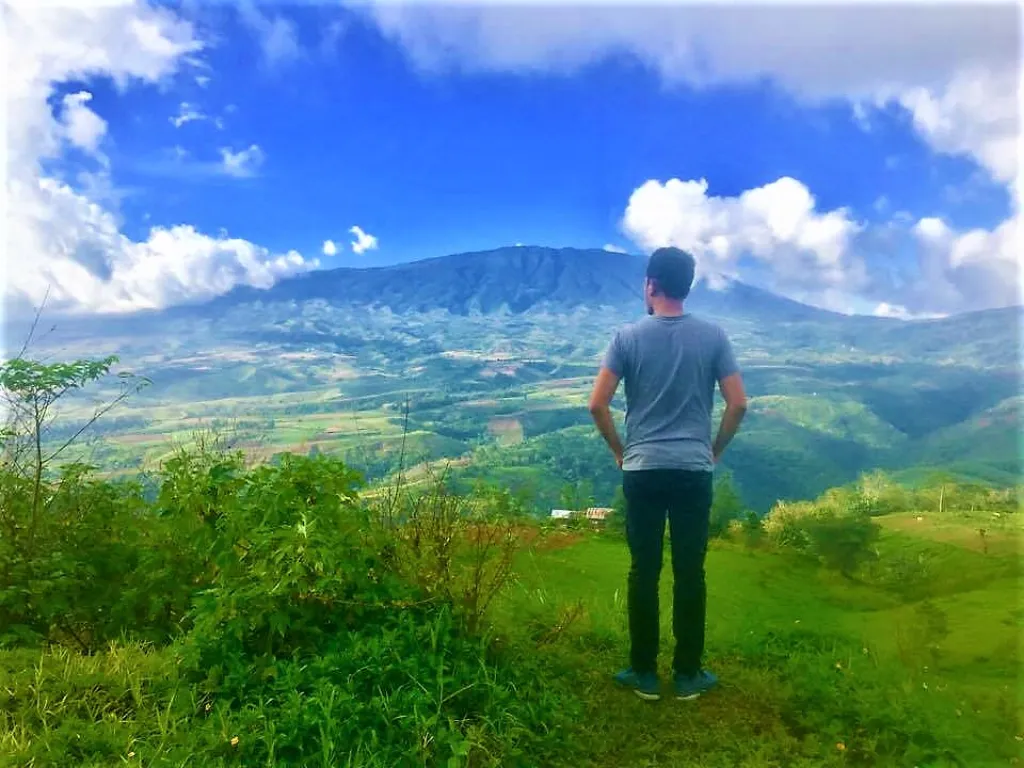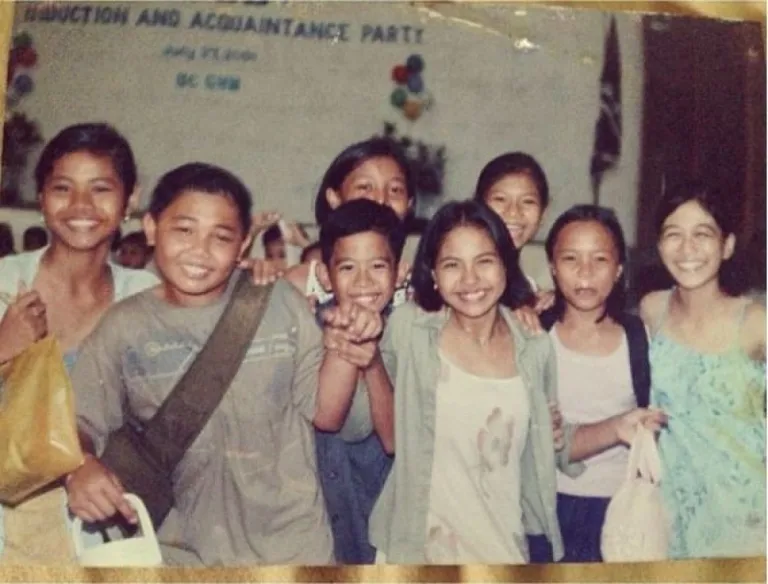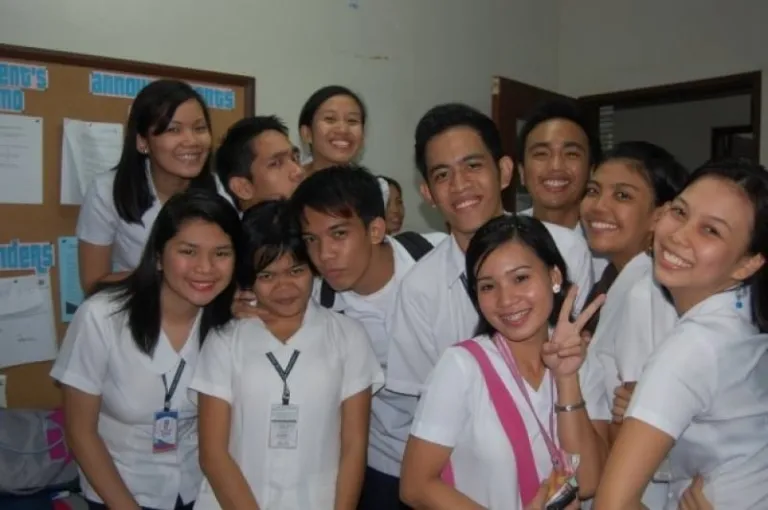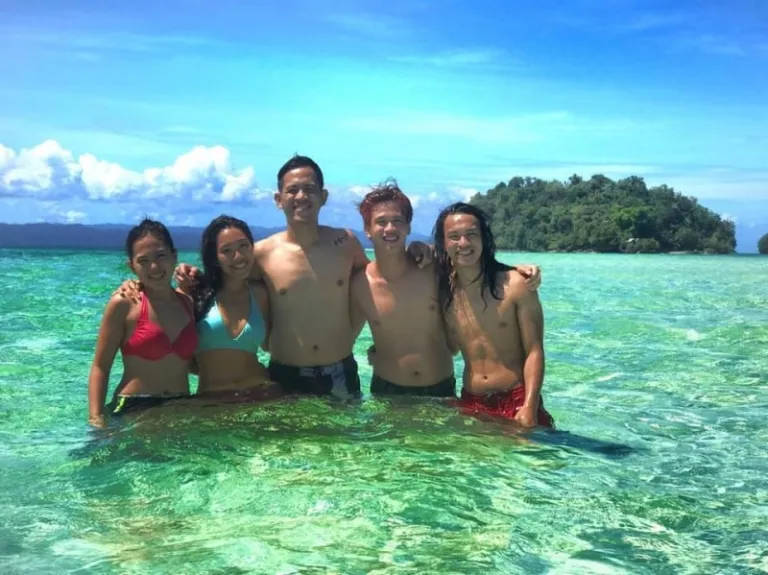Our favourite places to stay on this sleepy Cebu island.
Is It Still Safe to Travel to Mindanao? – from a Local’s Perspective

I was born and spent my early childhood years in Manila. My dad is a Bulakenyo, while my mom is a Surigaonon. I was in the third grade when the entire family decided to move to Mindanao, where I finished school and spent most of my adult life. When I decided to transfer back to Manila for far greater career opportunities, I was bombarded with reasonable, but sometimes utterly ridiculous questions by colleagues who have never been to the Land of Promise.

My workmates in Manila
Do you have electricity? Do you have internet? Do you have high-rise buildings? Do you have malls? But the most common question, and probably the hardest to answer was… Is it safe to travel to Mindanao?
Also read: 15 Unspoilt Beaches in Mindanao You’ve Probably Never Heard Of
I don’t blame them, though. I used to share the same fear before transferring to Mindanao. I remembered crying non-stop while we were in the seaport because I can’t help but picture myself as a refugee in a war-torn area waiting for rations of food served with unsanitary utensils. Manileños have an odd perspective of Mindanaoans, to say the least.
Life in Mindanao
On our first year in the South, my siblings and I stayed in my mother’s hometown in Lianga, Surigao Del Sur while she was working in Butuan City, which was 3 hours away. Lianga, which is a fourth-class municipality and was perceived to be a rebel-infested area, was my first impression of Mindanao. It was the complete opposite of our highly urbanised life in Manila. Here, we learned how to fetch water from a deep well, scrub the wooden floor of our ancestral home, do chores we’ve never done before, and to top it all, our aunt only gave us ₱2 as our daily allowance in school, compared to the usual ₱50 we got in Manila. It was very rural and we were never used to that kind of life, but the people made up for it. These people on this side of Mindanao, were the nicest people I’ve met so far.

Elementary classmates in Butuan
When my mom was able to establish herself as a doctor in Butuan, we all transferred. It was a huge adjustment since we were not familiar with the language yet. To sum it up, my primary and secondary years in this city were generally peaceful. Not once did I encounter any conflict that could’ve traumatised me as a kid.
Also read: Two Theme Parks in CDO Cancelled Due To Marawi Siege
I decided to study college in Xavier University in Cagayan de Oro City. Believe it or not, it was in this school that I first talked to a Muslim. Although XU is a Catholic school, it is very inclusive, which means that at least 20% of the students practice Islam. To be honest, I’ve always had negative connotations about them. Media has always projected them as the bad guys, and growing up, I stereotyped them as such. But thanks to this institution, I was able to widen my understanding, and I am proud to say that some of the best friends I’ve had in college were Muslims.

My classmates from Xavier University
I spent three years in Manila, where I was robbed twice, harassed countless times in the MRT, experienced near death almost every time I cross the road, and probably have damaged lungs because of the pollution. These are things that I probably would not have experienced in my hometown. I decided to transfer back to the more laidback life I had in Mindanao, where everything was conveniently 10 minutes away from where I live. When I got back, I have always invited my friends and officemates in Manila to see Mindanao first hand for them to be able to remove all the negative perceptions they have of the region. It has been a struggle convincing them, but for the brave souls who risked it, they didn’t want to leave anymore.
Also read: 10 Adrenaline-Pumping Adventures in Mindanao
Mindanao is home to some of the most pristine and unspoilt beaches in the country with adventure offerings that will excite any soul. But due to the presence of militants and rebels in the area, it has received worldwide negative press that erases all the good things that the region has to offer.

Toured my friends from Thailand, Bohol, Davao, and Baguio to one of the unspoilt beaches in Mindanao
Fast forward to 2017 and the entire nation was startled with an attack that nobody saw coming. Marawi was being terrorised by an organised group called the Maute, which is composed of family members who pledged allegiance to the international terrorist group, ISIS. This prompted the government to declare the Martial Law in the entire Mindanao.
Is it still safe to travel to Mindanao?
Again, we are being asked the same question. Is it still safe to travel to Mindanao? To be honest, we are not so sure anymore. While the Martial Law brought increased police presence in our locality, the promise of a safe vacation here cannot be assured. Although we see foreign and local vacationers every now and then, the tourism industry seems to be on hiatus.
I believe that a good vacation stems out from good timing. You wouldn’t want to travel to the beach on a rainy day, right? The same logic may apply for Mindanao this time. While Martial Law is still in effect and if the government has not given the assurance that everything is under control, it might be best to postpone your Mindanao trip. As much as we want you here, safety should always be the priority. After all these havoc, then we will welcome visitors with open arms.

Although the region had its fair share of terroristic activities which include bombings, rebel attacks, harassment, and kidnappings, Mindanao will always be our home. From our perspective, no matter where you live, there will always be danger lurking around the corner. You just have to take extra care!
Published at
About Author
Race Del Rosario
Subscribe our Newsletter
Get our weekly tips and travel news!
Recommended Articles
10 Bantayan Island Resorts, Hotels, and Rentals for Your Tropical Escape 10 Best Mountain Cafes in the Philippines for Your Peak Coffee Experience Coffee date on the mountains, anyone?
10 Family Outing Ideas in Metro Manila Under ₱500 Looking for a weekend bonding with the family under ₱500? Head to these places, pronto!
10 Fun Things to Do in Manila Alone Live your best life in Manila, even when you’re riding solo.
10 Instagrammable Laguna Restaurants and Cafes You’ll Love Elevate your Insta-game at these Laguna spots.
Latest Articles
Philippines Among the World’s Friendliest Countries – US News 2025 Ranking Learn why Filipino hospitality makes every trip unforgettable.
Best Attractions of Southeast Asia That Delight Both Kids and Seniors These top attractions in Southeast Asia offer scenic views, easy access, and calm experiences for the whole family.
Halal Town Manila: Quiapo Set to Become a Muslim-Friendly Food and Culture Hub Manila is about to get more muslim-friendly!
Italian Cuisine Earns UNESCO Status as Intangible Cultural Heritage Food with culture
MMDA Urges Malls to Limit Sales as Marcos Highway Traffic Worsens Commuters are frustrated, but is this really the solution to heavy traffic?

